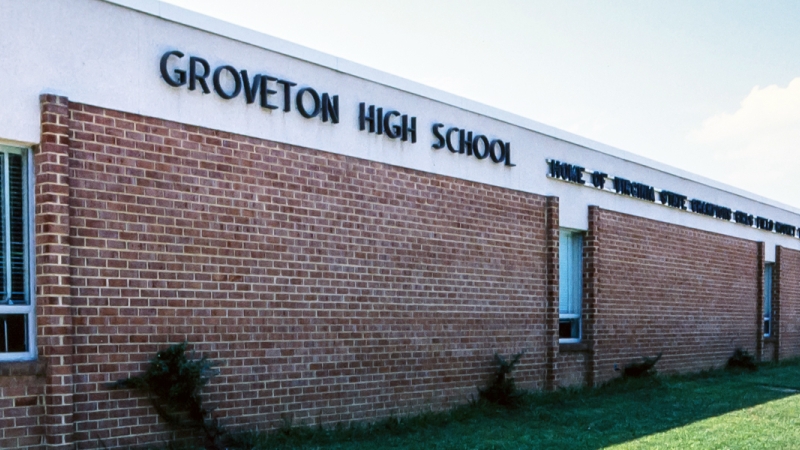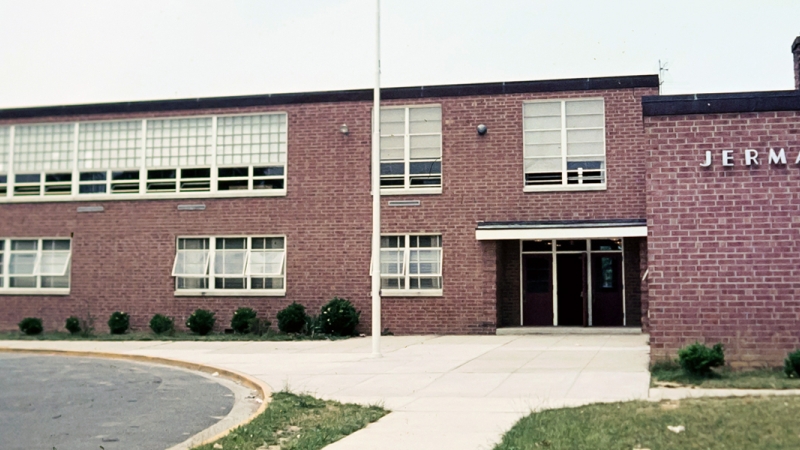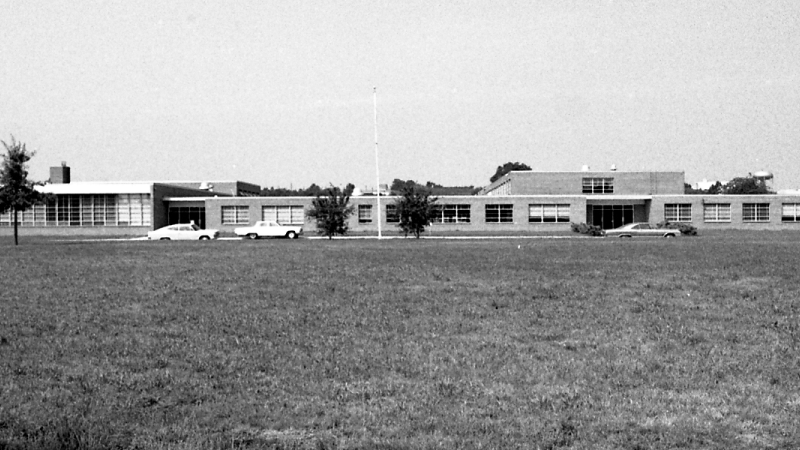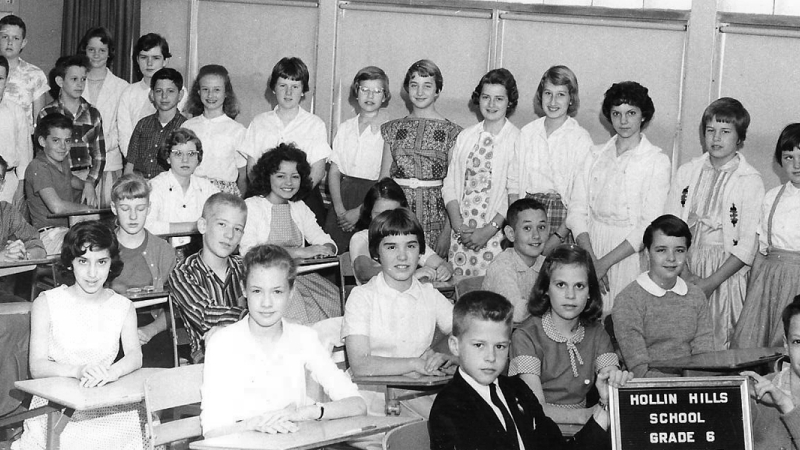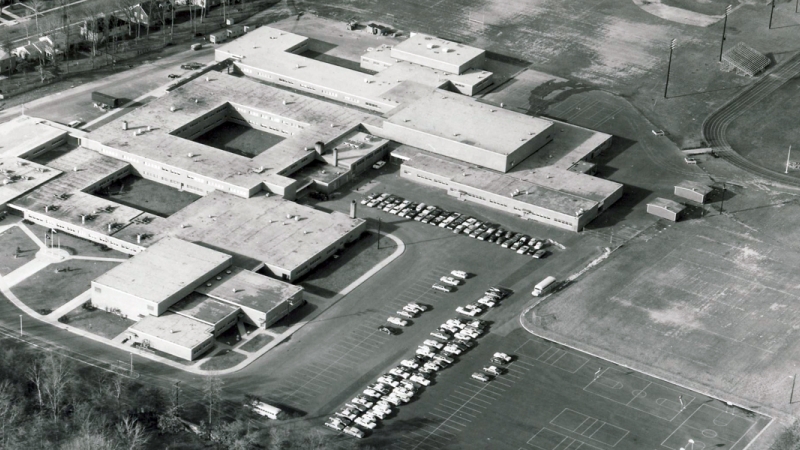
School History: John G. Whittier Intermediate School
Remembering Our Past
In July 1958, the Fairfax County School Board voted to reorganize the public school system and establish the county’s first intermediate schools. Traditionally, students in grades 1-7 attended elementary schools, and students in grades 8-12 attended high schools. Intermediate schools were created to ease the transition from elementary school to high school and provide a specialized program of study geared to the specific needs of seventh and eighth graders. A pilot intermediate school program began in the fall of 1958 at Parklawn School. The pilot proved so successful that FCPS embarked on an ambitious plan to open eight additional intermediate schools in the fall of 1960. At a School Board meeting in March 1959, the question of what to name the intermediate schools came up.
This prompted discussion on the naming of the proposed intermediate schools, which it was thought should have some uniformity for easy identification. The board was receptive to the idea of using the names of prominent, renowned men in some particular field, and requested that the administration follow the general direction of the board to make recommendations for school naming at the time contract for construction is let. ~ Fairfax County School Board Meeting Minutes, March 3, 1959
In May 1959, FCPS Superintendent W. T. Woodson submitted a list of proposed names to the School Board. The names were: Ellen Glasgow, Washington Irving, Sidney Lanier, Henry Wadsworth Longfellow, Edgar Allan Poe, Henry David Thoreau, Mark Twain, Walt Whitman, and John Greenleaf Whittier. The School Board approved Woodson’s proposal and founded Fairfax County’s longstanding tradition of naming intermediate schools for famous authors and poets.
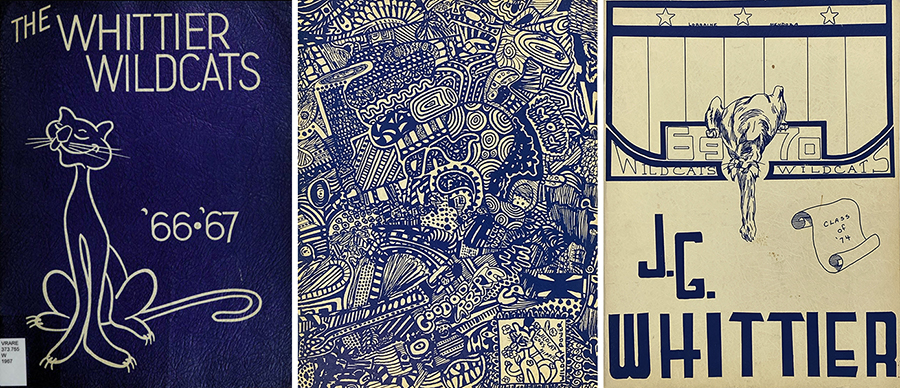
Intermediate School #8
Known during the architectural design process as Intermediate School #8 – Falls Church, J. G. Whittier Intermediate School was given its name on May 5, 1959. Six months later, on November 5, 1959, the School Board awarded the contract for the construction of the building to the Glassman Construction Company for $1,012,000.
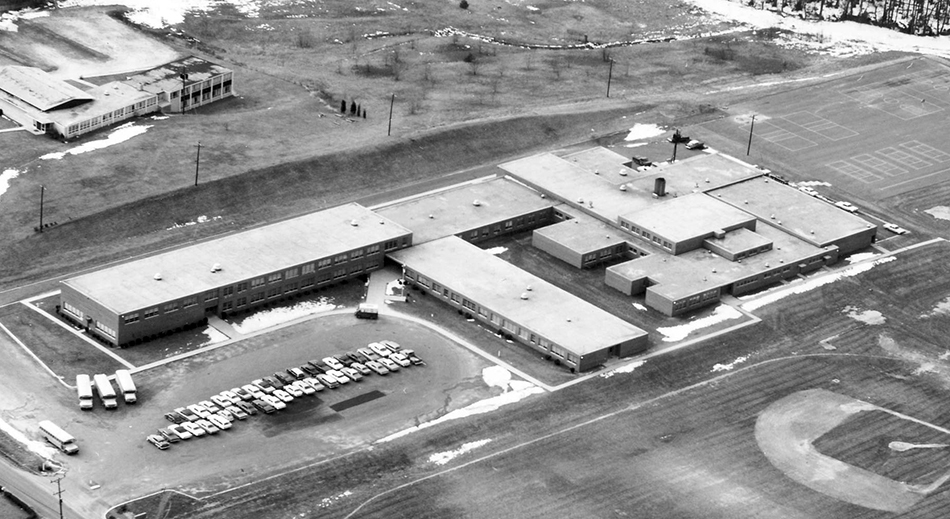
John Greenleaf Whittier Intermediate School opened its doors to students in September 1960. The school’s first principal was Floyd W. Worley.
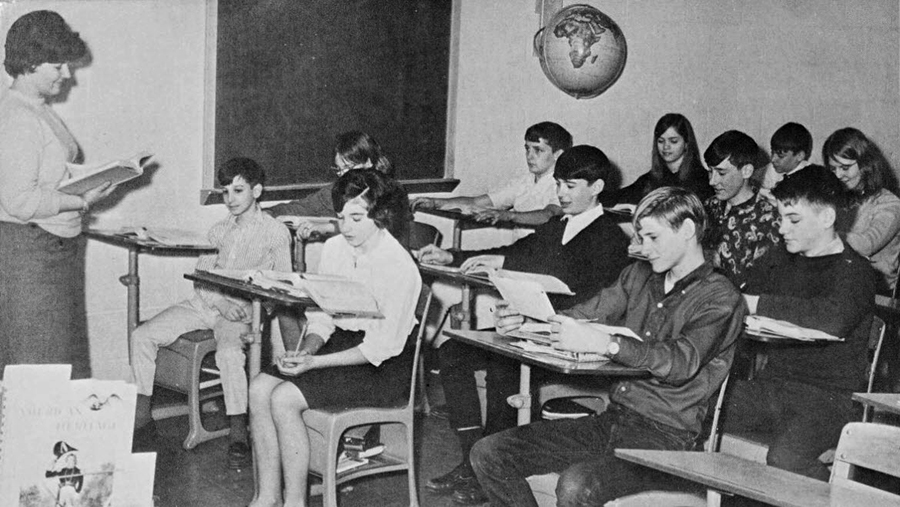
School Desegregation
From its founding in 1870 until the mid-1960s, FCPS operated a “dual school system” with racially segregated schools for white and Black students. The desegregation of the county’s public schools began in September 1960, when United States District Court Judge Albert V. Bryan ordered the Fairfax County School Board to admit Black children into white schools closer to their homes. The process of desegregation proceeded slowly over a six-year period. A desegregation report prepared by FCPS staff showed that J. G. Whittier Intermediate School desegregated in the fall of 1961 when it admitted one student of color. During the 1964-65 school year, Whittier Intermediate School had a total enrollment of about 900 students, of whom 24 were Black.
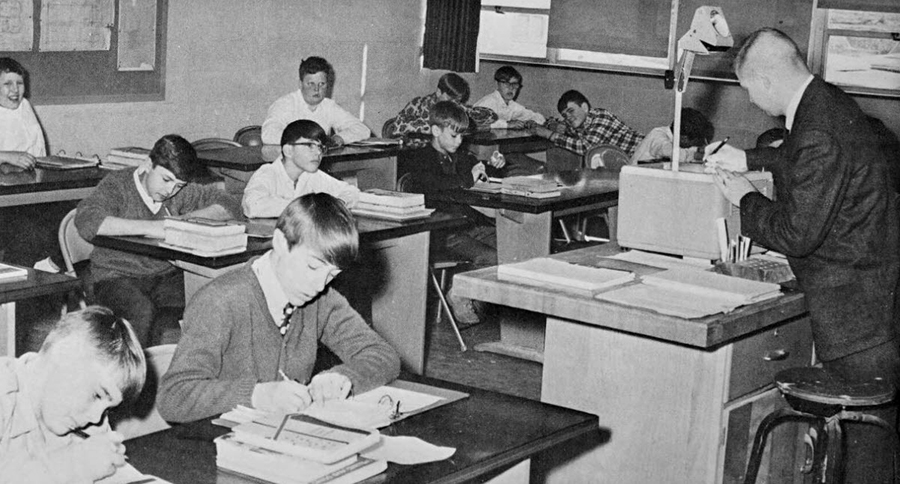
Exchanging Schools
From 1960 to 1964, the student population of FCPS increased from about 59,800 to approximately 86,900. In the fall of 1964, Falls Church High School had an enrollment of about 1,800 students, but the building was only large enough to support an enrollment of 1,400 students. This led to classes being held in hallways, on the auditorium stage, and outside the building in Quonset huts.
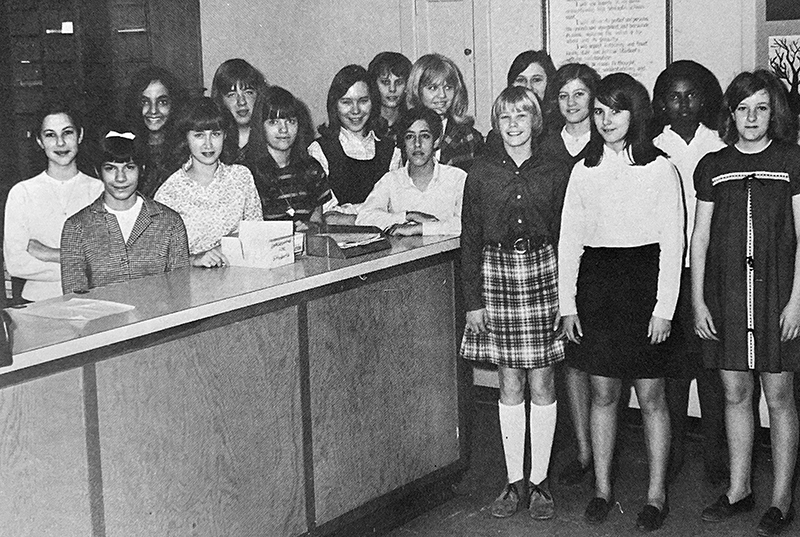
Because Falls Church High School was landlocked and had no room for expansion, the School Board decided to exchange campuses between Falls Church High School and J. G. Whittier Intermediate School at the conclusion of the 1966-67 school year.
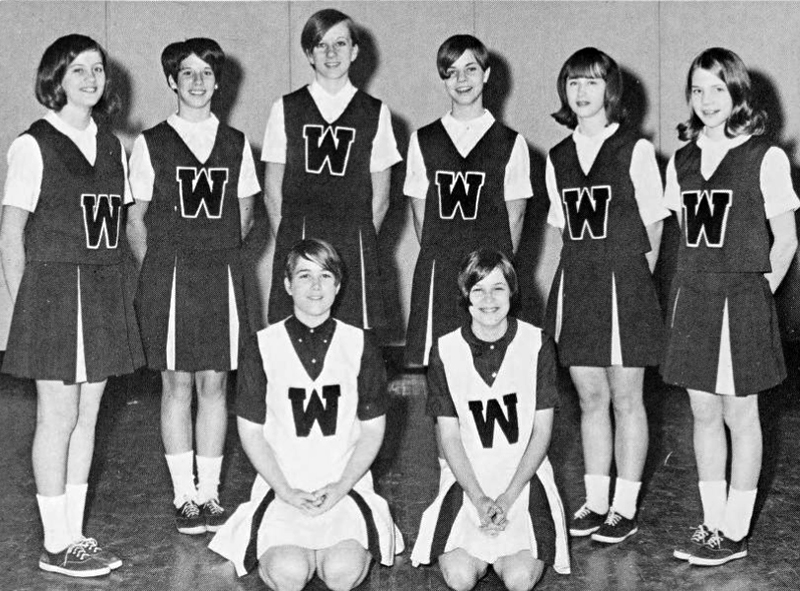
The conversion of the Whittier building into a 2,200-student capacity high school required the construction of additional classrooms and other facilities. On February 24, 1966, the School Board awarded the contract for the conversion of Whittier into a high school to contractor James L. Partello for $2.7 million.
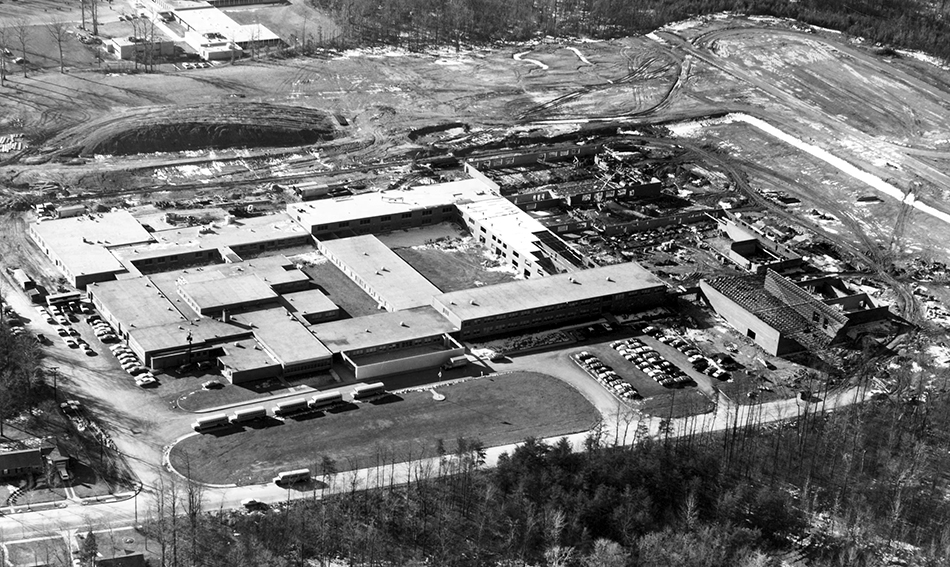
Founded in 1945, Falls Church High School was originally located in the town of Falls Church at the intersection of Cherry Street and Hillwood Avenue. After the City of Falls Church incorporated and formed an independent school system in 1948, Fairfax County retained ownership of Falls Church High School.
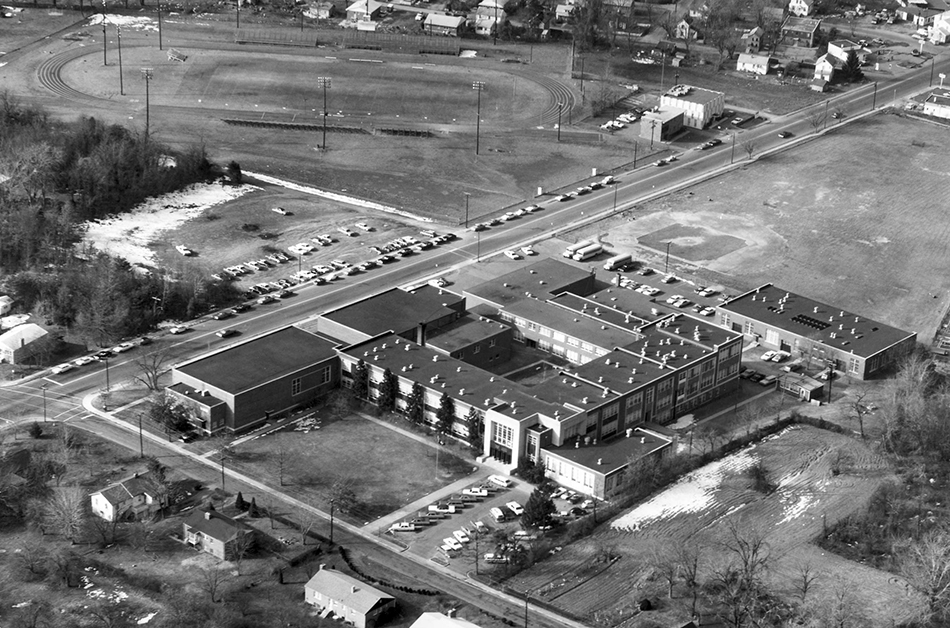
Whittier Closes
After nearly three decades of sustained student enrollment growth, the school-age population of Fairfax County peaked at 138,000 in 1972. During the mid-1970s, enrollment at elementary schools that had seen rapid growth during the post-World War II baby boom began to steadily decline. This led to the closure of 13 elementary schools between 1975 and 1982. As more and more students aged out of the school system, the intermediate and high schools began to see an abundance of empty classrooms in the early 1980s.
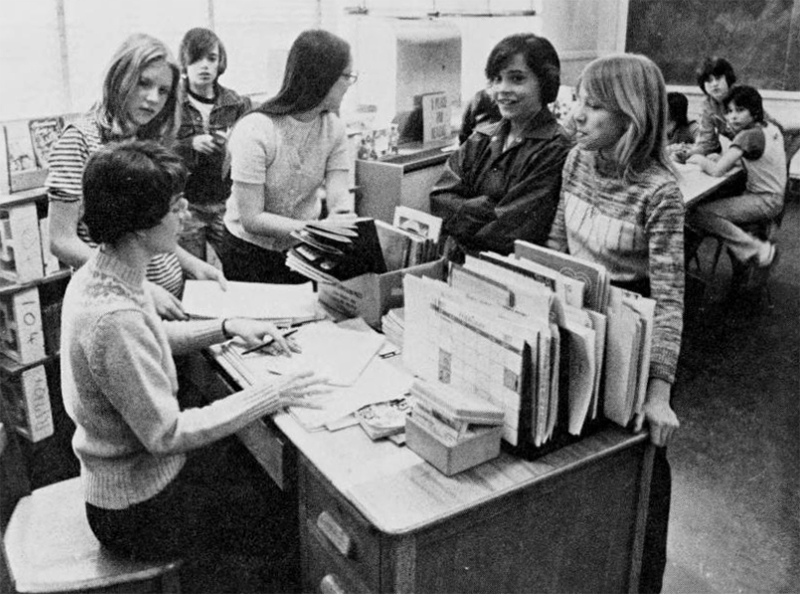
In February 1984, citing the age, condition, and location of the building, the Fairfax County School Board decided to close John Greenleaf Whittier Intermediate School permanently at the end of the school year in June. The school was declared surplus property and ownership of the facility was transferred to the Fairfax County Board of Supervisors, who later leased the building to private organizations.
Originally Falls Church High School and later converted to Whittier Intermediate School, the building has been virtually empty since Flint Hill Prep moved out about three years ago. Three non-profit groups have offices in the building, and Fairfax County houses its Juvenile and Domestic Relations District Court on the first floor. But more than 50 classrooms, a gymnasium, theater, laboratories, offices, and locker rooms remain empty and unsecured. On many nights, the front door is left open. ~ The Washington Post, June 30, 1992
In 1994, the Fairfax County Board of Supervisors deeded the Whittier school property to the City of Falls Church. The building was demolished around 1995 and the Whittier Park neighborhood was constructed on the former school site.
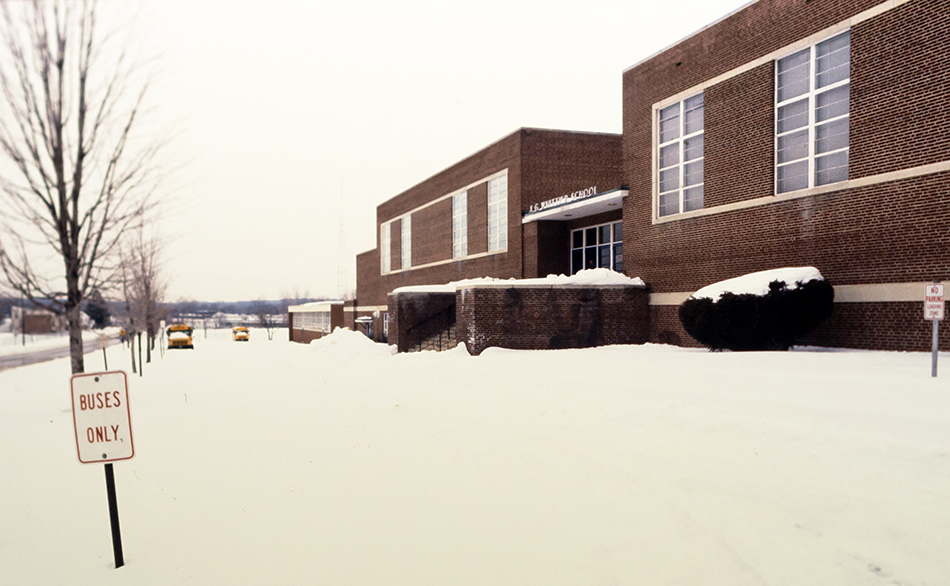
The Principals
The principals of J. G. Whittier Intermediate School were Floyd W. Worley (1960-63), Tristan C. Hauer (1963-70), William D. McKinney (1970-72), Glenn J. Muhle (1972-79), Paul G. Douglas (1979-83), and Gary W. Miller (1983-84).
What’s in a Name?
Whittier Intermediate School was named for John Greenleaf Whittier, an American poet and abolitionist. J. G. Whittier was born in December 1807, in Haverhill, Massachusetts, to John Whittier and Abigail Hussey. An avid reader, Whittier developed a desire to write after reading the works of Scottish poet Robert Burns. Whittier’s first poem, “The Diety,” was published in 1826 in William Lloyd Garrison’s Newburyport Free Press. Garrison was one of the founders of the American Anti-Slavery Society, which promoted the emancipation of slaves in the United States. Whittier’s own views on slavery were greatly influenced by Garrison. In 1846, a collection of Whittier’s antislavery poetry called “Voices of Freedom” was published. From 1847 to 1859, he was an editor for an anti-slavery paper called The National Era.
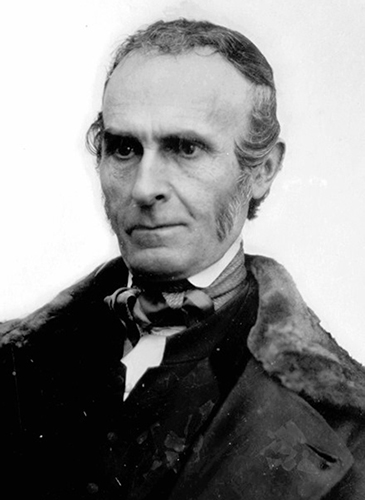
After the American Civil War, John Greenleaf Whittier concentrated on writing poetry and hymns. One of Whittier’s most beloved poems, “Snow-Bound,” was published in 1866. Written as a succession of stories told by a family during a snowstorm, “Snow-Bound” described the peaceful return to rural country life after the horrors of the Civil War. John Greenleaf Whitter died in September 1892, in Hampton Falls, New Hampshire, age at 84, and was buried in Union Cemetery in Amesbury, Massachusetts. Many schools throughout the United States are named in his honor.
